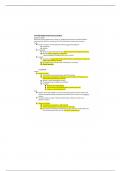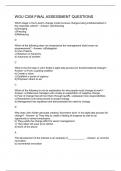Samenvatting
Summary History of the Middle East: Weeks 1 - 5
- Instelling
- Universiteit Leiden (UL)
A comprehensive summary of everything you could possibly need to know for the midterm for History of the Middle East, including lecture notes and readings! Helped me get an 8 for the midterm!
[Meer zien]














